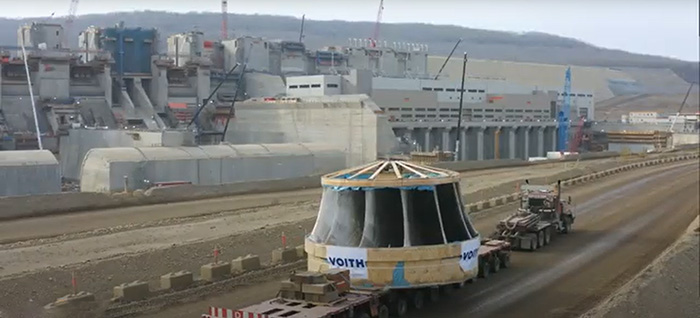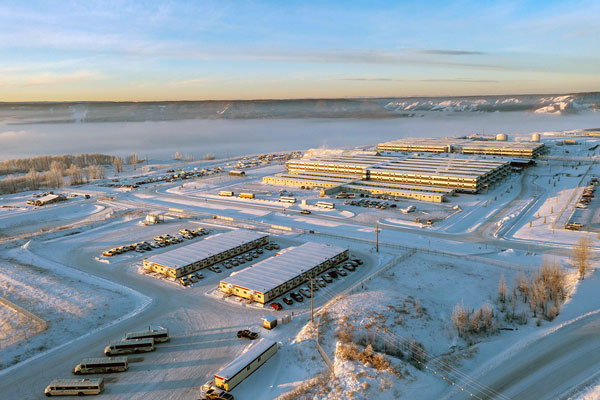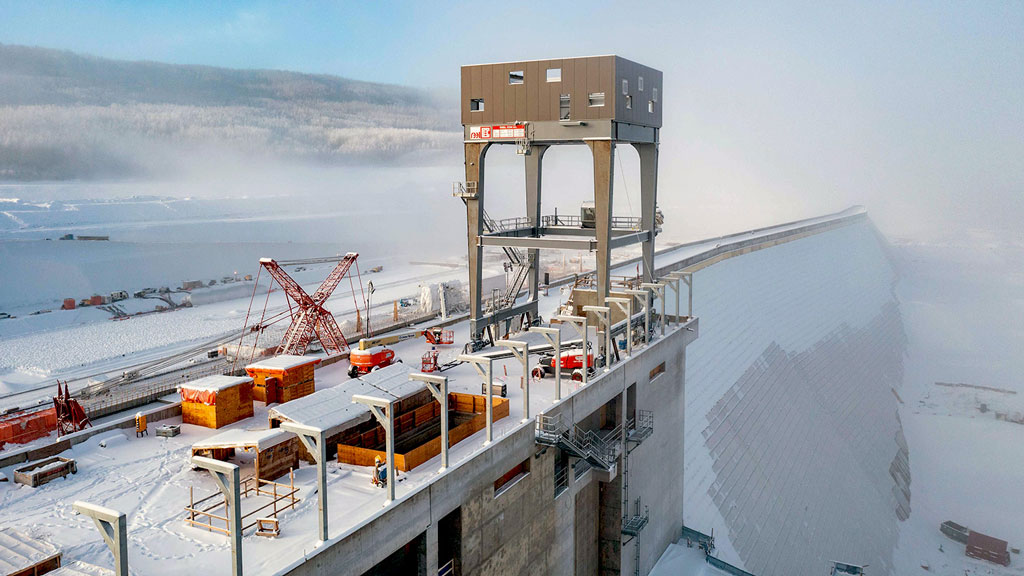All of the turbines responsible for generating power at the $16 billion Site C Dam have arrived and one has recently been installed in the project’s powerhouse.
“When we fill the reservoir, all of that water will come rushing through giant tubes called penstocks,” said BC Hydro’s Jesse Johnston.
The penstocks are big enough for the fuselage of a Boeing 747 to fit through.
“And the force of that water is what turns the turbines and that’s how we make electricity,” said Johnston.
The turbines were built by Montreal-based Voith Hydro Inc. who received a $470 million contract for the design and supply of six vertical axis, Francis-style turbines, six generators and associated equipment in 2016.

The turbines have an output of 250,000 horsepower, roughly the same as 600 Ford Mustang GTs running at full-power.
They can each fill an Olympic-sized swimming pool with one second of maximum discharge.
An essential component of the turbines is a “runner,” without which the process could not work.
“The runner is part of the turbine assembly. It converts the potential energy from the water in the reservoir into rotational energy to spin the generator,” said Matthew Thompson, engineering team lead for Site C with BC Hydro.
The runners are 4.2 metres high and 7.4 metres in diameter.
The turbines, runners and penstocks were all manufactured in Brazil and underwent a lengthy ship trip from the Atlantic Ocean, through the Panama Canal and up the Pacific Coast to arrive at their permanent home.

Site C continues to be a strong employer of British Columbia residents.
There were 4,778 workers on Site C throughout January, of which 69 per cent were residents of B.C. Approximately 935 workers hailed from the Peace River Regional District.
Construction and non-construction contractors accounted for 3,978 of the total work force, while 800 were engineers and the project team. The project employed 350 Indigenous people, 505 women, 174 apprentices and 26 international workers during January.
Most workers at the site were in the trades or labourers.

With so many hands on deck, there seems to be no shortage of work to be done before the scheduled 2025 completion date.
At the dam site, excavation of the approach channel and associated drilling, grouting and placement of concrete and rip rap are still underway.
Steel piles in the tailrace excavation are getting installed for the right bank foundation enhancements, powerhouse, spillway and intake construction continues, and installation of a gantry crane on the powerhouse tailrace deck is set to begin, among a myriad of other activities.
Clearing of the reservoir area continues with reservoir filling possibly happening later this year. Crews are removing regrown vegetation in previously cleared areas and have finished clearing at Watson Slough.
Once the reservoir is complete it will take around four months to fill. The process involves restricting the flow of water through diversion tunnel two in the conversion process. Once a series of four flow restricting rings are installed in tunnel two, it is reopened and tunnel one is closed which begins the slow filling of the reservoir.
Once this process is underway the water level will fill at a rate of roughly 15 metres every two to three weeks.
After this level is reached, tunnel two will be closed and the reservoir will fill for another six to 10 weeks until it reaches a maximum depth of 52 metres near the dam, rising to 18 metres near Hudson’s Hope. The diversion tunnels will be permanently backfilled.
The reservoir will be 83 kilometres long and two to three times the width of the Peace River.
While the reservoir will only be five per cent of the size of the Williston Reservoir, it will generate 35 per cent of the energy that the W.A.C Bennet Dam does.
The Site C Dam is expected to produce enough energy to power 450,000 homes every year and will operate for more than a century.











Recent Comments